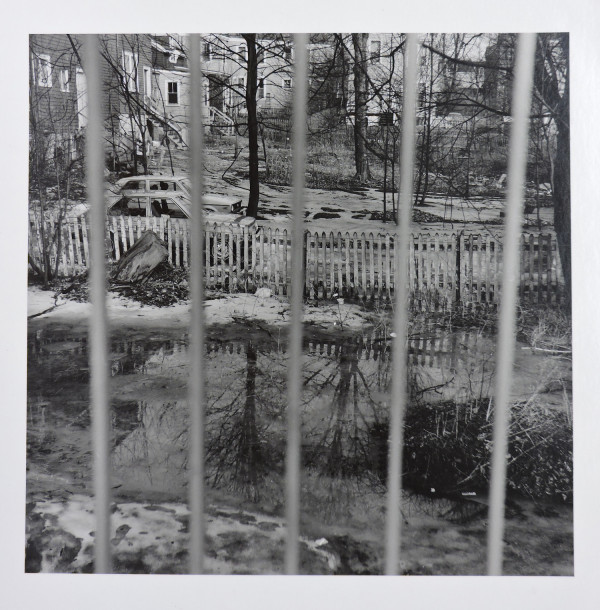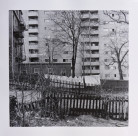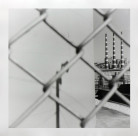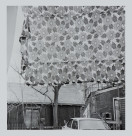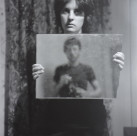Robert took a series of photos while attending art school on the theme of “fences,” using a square format 2 1/4 x 2 1/4 ” camera. The images are detailed, composed with great care and precision. In the sample above, fence and trees provide vertical and horizontal patterns that are almost grid-like in their regularity, yet appear at different depths. The metal rails of the balcony in the foreground, through which this dissolving world of snow and puddle is glimpsed, add a sense of height and distance. The white picket fence in the middle distance divides the picture in half, separating the buildings, cars and trees on one side from their reflections on the other.
The fence is seen as a boundary marker dividing things into orderly units and restricting the photographer’s access to the space before him. Robert worked at a time when postmodernism was at its height. The leading idea of postmodernism is that there is no single truth to any situation. Instead of one story telling a universal history, there now were many conflicting stories telling different kinds of histories. Artists responded by adopting points-of-view that were limited and provisional, openly acknowledging such things as means and opportunity. The fence is Robert’s way of saying, I was only able to go so far in my investigation, and by extension, the viewer can only go so far as well.
Robert’s photographs of fences were mostly shot in the North End of Halifax, where Robert was living at this time, and combine a feeling for urban spaces with an appreciation for ephemeral and atmospheric elements. It is also his first foray into a documentary mode. This documentary approach would reappear throughout Robert’s work, most tellingly in his final “Illness and Healing” series.
